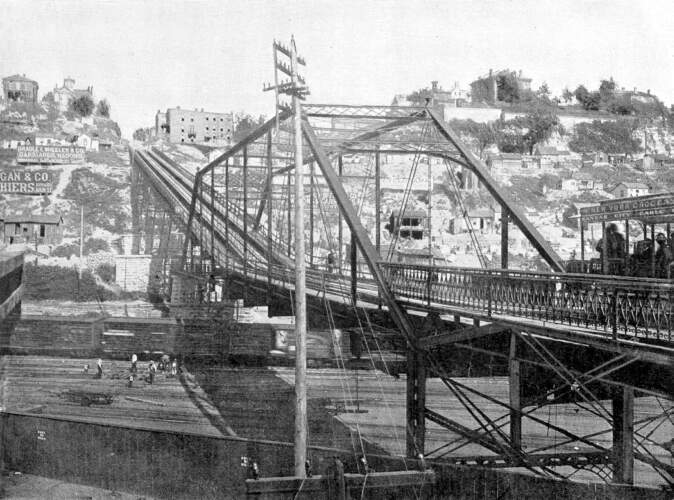CABLE-RAILROAD SCENE.
This will readily be recognized by many as a typical railroad
scene, in which no locomotive plays a part; it illustrates, moreover,
one of the specialties in railway construction and machinery advocated
by many—the cable—and which has been introduced quite
extensively in some parts of the country with varying degrees
of success depending, of course, upon different working arrangements,
as well as upon details of management, though a large factor in
the case, under any circumstances, must necessarily be that of
topography or grade. The plans which have been devised for rendering
such a system most perfectly practicable are many, and have been
the subject of much study and experiment. Among the most ingenious
of these, and well deserving of mention, is that for ensuring
efficient cable-working, in the case of an ordinary incline, by
means of what is termed the three-railroad, from end to end. In
this system no movable parts are used at any point in the track,
consequently there is no risk of accidents from the failure of
parts to work under the varying condition of such service; solidity
is assured by the extra width of the road-bed, therefore steadiness
of running at high speed is practicable; sufficient space and
play are given for the rapidly moving cables to hold the centre
of the separated tracks at all times, the grooved guide-wheels,
carefully spaced, holding the cars to the curves as evenly and
truly as on the straight track. Steel rails are used, twenty-five
pounds to the yard, and laid on cedar ties nine feet long; no
spikes are used; the rails being secured by heavy log screws five
inches long.
This picture is the Kansas City Cable Company crossing the
Santa Fe Argentine Yards.
New York Grocery on Cable Car: ad for a local grocery company
specializing in New York type foods.
From Sea to
Shining Sea | Contents Page
|







